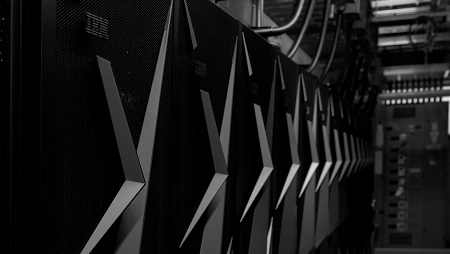
Quoted from the official website of “Oak Ridge National Laboratory”
RIKEN: Full-scale use of Fugaku will begin: Fujitsu provides A64FX to HPE Clay
Ministry of education:
From March 9th, full-scale shared use of Fugaku will begin.
Already since April last year, some of Fugaku’s computational resources have been used ahead of schedule.
Main areas of use: ongoing projects
New Coronavirus:
We are conducting research such as droplet simulation of COVID-19 and search for therapeutic drug candidates.
Drug discovery simulation:
In July last year, Professor Yasushi Okuno of Kyoto University and others conducted a drug discovery simulation using Fugaku.
The analysis result that the drug for parasites “Niclosamide is also effective as a therapeutic drug for the new corona infection” was announced.
In fact, at the end of October last year, clinical research on niclosamide started in the United States.
Expectations are rising that “it may have a higher therapeutic effect on the new corona than remdesivir.”
Estimate metastatic cancer gene mutations:
Satoru Miyano, Director of M & D Center, Tokyo Medical and Dental University, an authority on cancer genomic medicine
Analyzing with AI for network analysis called “Deep Tensor”.
Estimate “gene mutations that cause metastatic cancer” from cancer-related big data.
When using the “SHIROKANE supercomputer of the University of Tokyo Human Genome Center”, it takes two and a half months to process.
On the other hand, if you use Fugaku, “it will end in about 20 minutes” (Professor Miyano).
Simulation Astronomy:
In addition, “simulation astronomy” to elucidate the large-scale structure of the universe through simulated experiments using supercomputers.
The first person, Professor Junichiro Makino of Kobe University, believes that “Fugaku can be used to faithfully reproduce the galaxy formation process.”
European space satellites:
Flying the “Gaia” exploration satellite into outer space,
It measures distances and movements of up to 1 billion stars in the galaxy.
It is expected that a wide range of information will be obtained from the movement of individual stars to the generation process.
“With Fugaku, research comparable to this will be possible in Japan,” says Professor Makino.
Fugaku’s greatest strength:
TOP500 Organizer, Jack Dongarra, Special Honorary Professor, Department of Computer Science, University of Tennessee, USA
“The biggest advantage of Fugaku is its ease of use,” he said.
CPU / GPU combined architecture:
The fastest supercomputer in the United States “Summit”
China’s fastest “Kamiui, Oko Nomitsu” etc.
Both are “architectures that combine a large number of general-purpose CPUs with a GPU accelerator.”
“This is both an advantage and a disadvantage,” professor Dongara analyzes.
Difficulties of using CPU / GPU together:
The GPU greatly enhances the computing power of supercomputers.
However, if the GPU cannot be used well, the overall performance of the supercomputer will deteriorate.
It is actually very difficult to link the two and use them in a well-balanced manner.
separate programs for CPU and GPU:
Also, it is necessary to prepare separate programs for CPU and GPU.
This is also a heavy burden for researchers in science and industry.
Fugaku is simple and easy to use:
On the other hand, Fugaku, which unified the whole with only a general-purpose CPU, is very simple for researchers, easy to use, and has a small workload.
Fugaku ranked first in the HPL-AI category:
Satoshi Matsuoka, Director of RIKEN Center for Computational Science.
Fugaku is by far the best in the AI processing capacity / HPL-AI category (2020 world ranking)
With Fugaku, “the world’s largest AI platform,” he said, “Japanese industry can compete with and overtake GAFA.”
Recent AI R & D:
In the future, it must be emphasized that “computing for HPCs such as supercomputers is becoming more and more important.”
Intelligent games like AlphaGo,
Advanced image recognition,
Including the natural language system that will grow in the future
In the AI field, it will eventually become a game of HPC like a supercomputer.
“HPE Clay” adopts “A64FX”:
The US supercomputer “HPE Cray” also mentions the ultra-high-speed CPU “A64FX” that it has decided to adopt.
The processor (CPU) of the “A64FX” is expected to “become a signal that the Japanese semiconductor industry will revive.”
Hyundai Business | Kodansha
https://gendai.ismedia.jp/articles/-/80802?page=1&imp=0
World Supercomputers: Top 10 Performance Rankings
Second place: Summit in the United States
A supercomputer for scientific research purposes at Oak Ridge National Laboratory in the United States Department of Energy (DOE).
IBM Power 9 processor,
Using NVIDIA Tesla V100 GPU,
Processing speed is 200PFlop / s (peak),
Total memory is 10PB.
For two years, 2018 and 2019, he reigned as the number one in the world.
3rd place: Sierra, USA
It operates at the Lawrence Livermore National Laboratory in California.
Next-generation advanced technology system under the jurisdiction of the National Nuclear Security Administration (NNSA).
For processor architecture
In addition to IBM’s “Power”, NVIDIA’s GPU “Volta” is used.
Processing speed is about 125.7PFlop / s (peak),
Total memory is 1.38PB.
It is mainly used for simulation of nuclear weapons.
4th place: Sunway TaihuLight (China)
5th place: Selene (USA)
6th place: Tianhe-2 (China)
7th place: JUWELS Booster Module (Germany)
Netorabo Survey Team